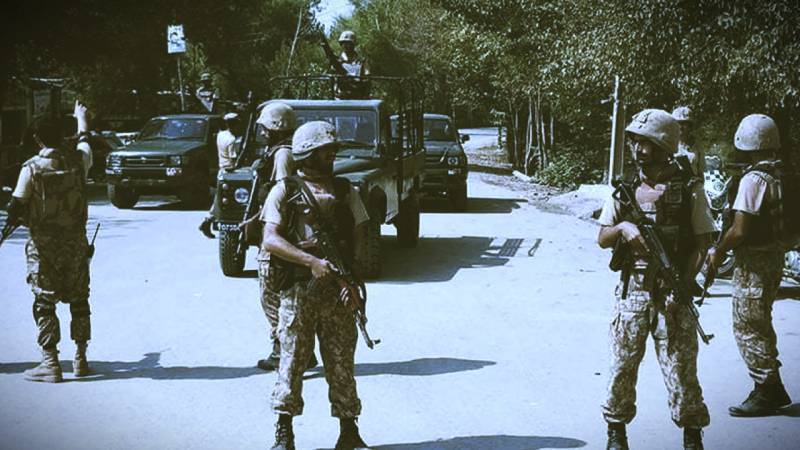
Surge In Terrorism: Pakistan Just Experienced Its Most Violent Period This Year
Over 1,300 casualties were recorded in the third quarter of the year, with Balochistan and KP being the most affected
Pakistan experienced its most violent period of the year so far, with the third quarter of 2024 witnessing a sharp increase in terrorism, with some 722 people losing their lives, including civilians, security personnel, and militants, while 615 others were injured in 328 recorded incidents. The launch of an operation, Azm-e-Istehkam, has yet to create an impact on terror activities.
A report by the Centre For Research and Security Studies (CRSS), a staggering 90% increase in fatalities compared to the previous quarter was recorded in the period from July through September. Nearly all of the fatalities recorded during this period — around 97% —occurred in Khyber Pakhtunkhwa (KP) and Balochistan, marking the highest regional toll in over a decade.
The violence underscores a growing security crisis that has gripped these provinces despite ongoing counter-terrorism efforts.
The total death toll from terrorist violence in the first three quarters of 2024 has now surpassed the figures for the entire year of 2023. At least 1,534 people were killed in the first nine months of this year, compared to 1,523 fatalities recorded in all of last year. The surge in violence comes despite the military’s intensified anti-terror operations. Inter-Services Public Relations (ISPR) Director General Major-General Ahmed Sharif asserted in his periodic news conferences that the military had been conducting a whopping 112 daily intelligence-based operations across the country in July. However, these operations seem to have had little impact on the unrelenting wave of violence.
The growing violence has significantly impacted the state’s control in KP and Balochistan, with the number of civilian and security personnel fatalities rising sharply.
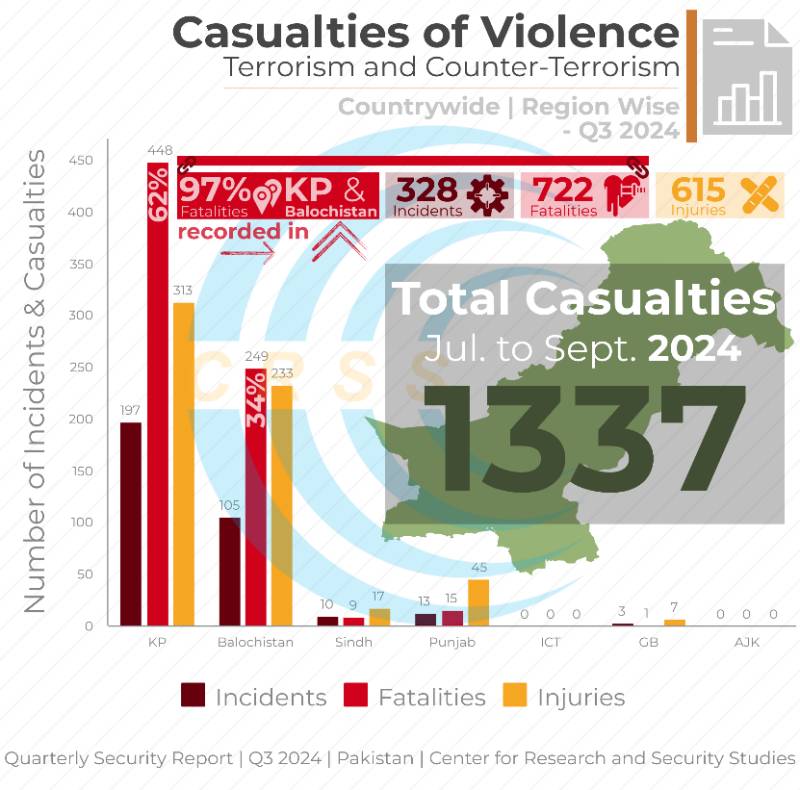
In KP, a bomb attack on a convoy of foreign diplomats and a subsequent massive rally in Mingora, Swat, typifies the situation there with impunity for terrorists and frustration and outrage amongst the people in the province. Political leaders, residents, and even law enforcers in areas such as Lakki Marwat, Bannu, and Swat have rallied en masse to voice their concerns about the worsening security situation in the region. The increasing number of targeted killings and insurgent attacks have also raised concerns about the effectiveness of civilian law enforcement agencies. In these regions, local police have expressed growing distrust of the military’s handling of anti-terror operations, deepening the divide between the public and the security apparatus and creating a challenge for more effective action against terrorists and other inimical forces.
Meanwhile, militant groups continue to reorganise and bolster their ranks. Reports suggest that the number of factions aligned with the banned Tehrik-i-Taliban Pakistan (TTP) has grown to 60, with the Naeem Bukhari group from Lashkar-e-Jhangvi being the latest addition. Although many of the terror attacks during this period went unclaimed, several groups, including the Balochistan Liberation Army (BLA), United Baloch Army (UBA), TTP, and the Gul Bahadur Group, have claimed responsibility for specific, high-profile incidents. Additionally, Iran-based militant group Jaishul-Adl has been suspected of being involved in certain attacks in Balochistan, further complicating the security situation.
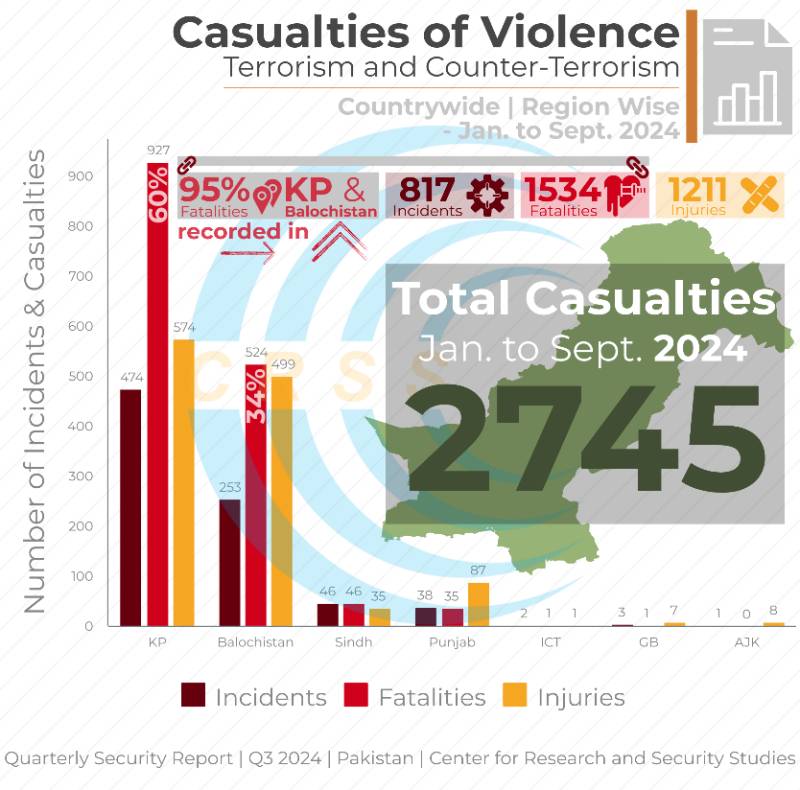
While KP and Balochistan witnessed a dramatic increase in violence, recording 77% and 159% increase in attacks respectively, other provinces like Punjab and Sindh saw a relative decline in terror activity. The surge in KP and Balochistan indicates a concentrated effort by militant groups to destabilise these regions. Civilians have borne the brunt of this violence, accounting for 66% of the fatalities, followed by security personnel and government officials. Attacks targeting civilians, security personnel, and government representatives made up 82% of all incidents, reflecting an alarming trend of insurgents shifting their focus away from direct confrontations with security forces to targeting softer, more vulnerable groups.
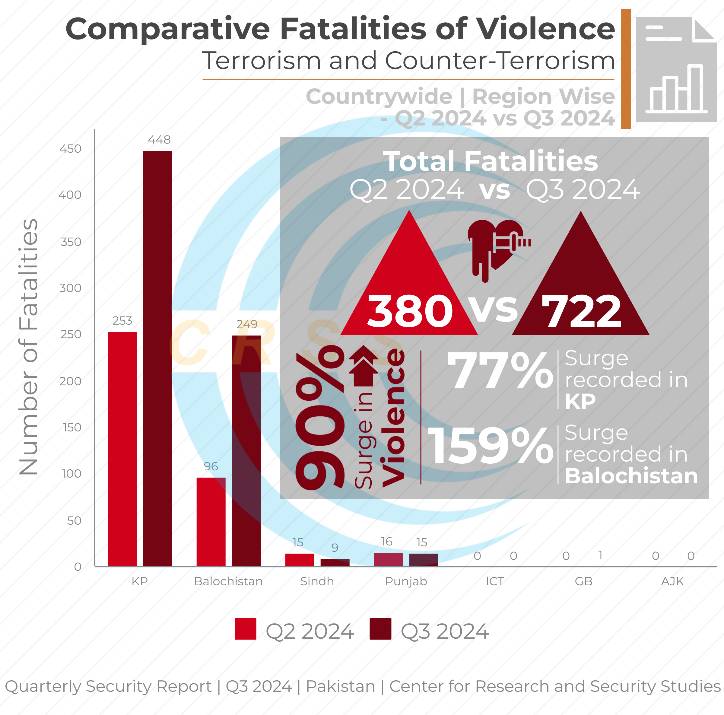
A disturbing new trend has also emerged in the form of increased attacks on non-Baloch workers, particularly in Balochistan. A total of 38 workers from Punjab, Sindh, and other regions were killed in different attacks during the quarter under review. In one of the deadliest incidents, 23 workers travelling from Punjab to Balochistan were pulled off buses in Musakhel and executed after militants confirmed their origins to Punjab. The Balochistan Liberation Army (BLA) claimed responsibility for this deadly massacre, marking the first time the group carried out such a large-scale attack in a predominantly Pashto-speaking area. The Pakistan Army responded by launching a search operation, reportedly killing 21 insurgents, although the clash also resulted in the death of 14 soldiers.
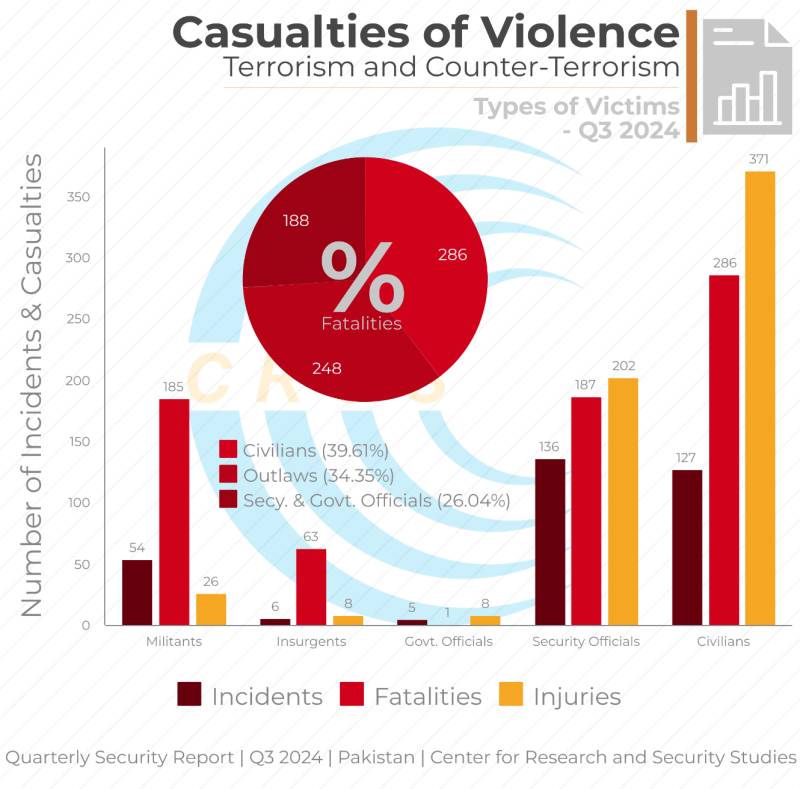 The violence has also spread beyond ethnic and political lines, with sectarian violence escalating in the region. In one of the deadliest incidents, sectarian conflict in Kurram District claimed over 100 lives and left 143 others wounded. Initially sparked by a land dispute between the Turi (Shia) and Bangash (Sunni) tribes, the alleged involvement of TTP militants significantly escalated the violence.
The violence has also spread beyond ethnic and political lines, with sectarian violence escalating in the region. In one of the deadliest incidents, sectarian conflict in Kurram District claimed over 100 lives and left 143 others wounded. Initially sparked by a land dispute between the Turi (Shia) and Bangash (Sunni) tribes, the alleged involvement of TTP militants significantly escalated the violence.
In addition to the clashes in Kurram, sectarian violence also spread to other parts of the country, with the killing of an Ahmadi doctor in Punjab and the assassination of Zakir Hussain Baloch, the deputy commissioner of Panjgur, in Mastung, Balochistan.
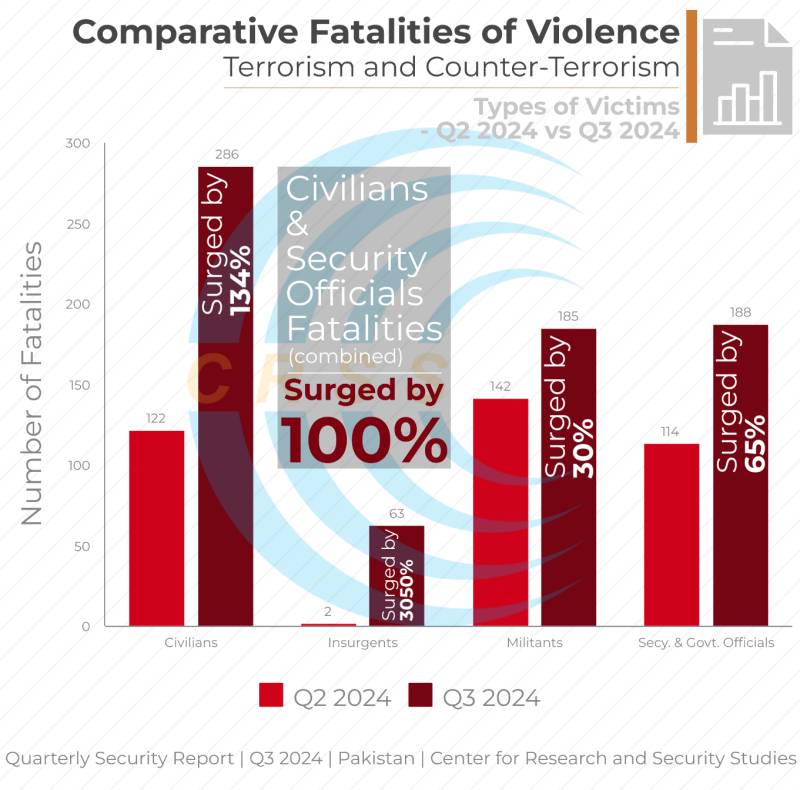 The surge in violence has prompted growing concern from political figures. Awami National Party (ANP) Central President Aimal Wali Khan has warned that nearly half of KP now lies outside the effective control of local police, highlighting the diminishing writ of the state in these volatile areas.
The surge in violence has prompted growing concern from political figures. Awami National Party (ANP) Central President Aimal Wali Khan has warned that nearly half of KP now lies outside the effective control of local police, highlighting the diminishing writ of the state in these volatile areas.
With terrorist groups continuing to exploit internal sectarian and ethnic divisions and the state’s control weakening, the violence in KP and Balochistan is poised to remain a major challenge for Pakistan’s security forces in the months to come.

